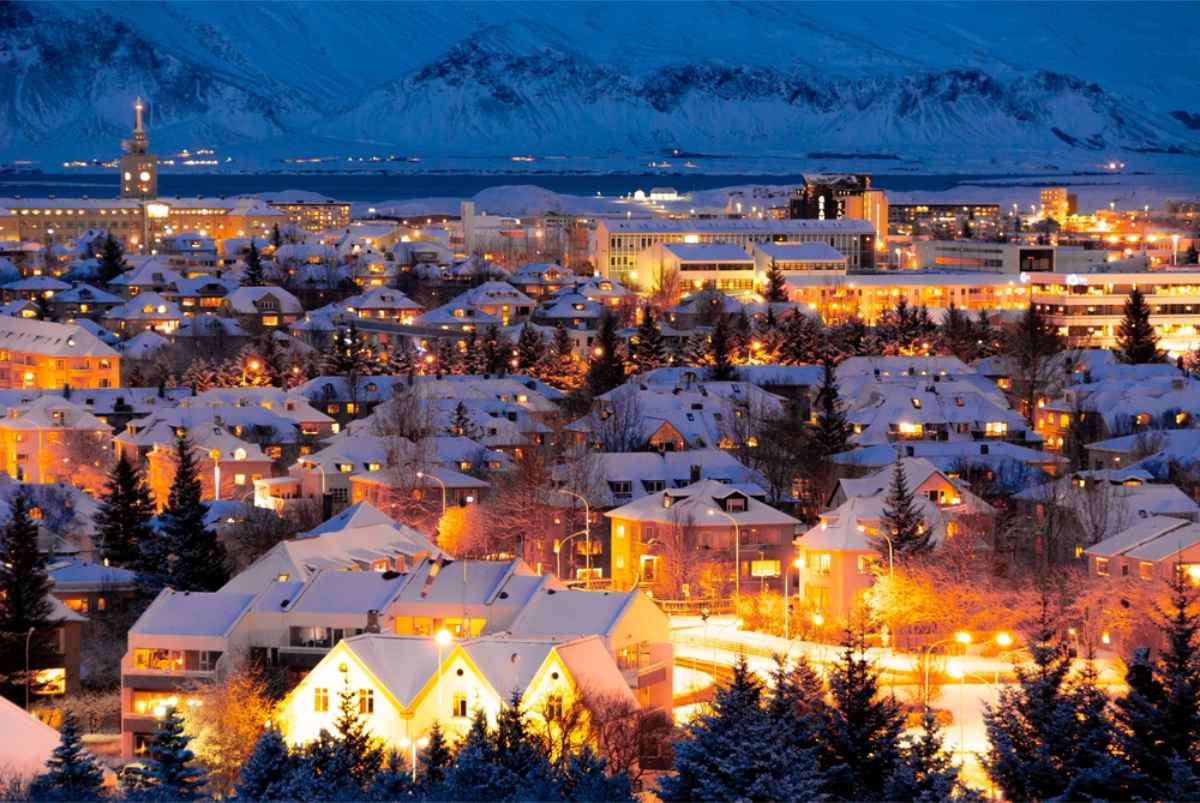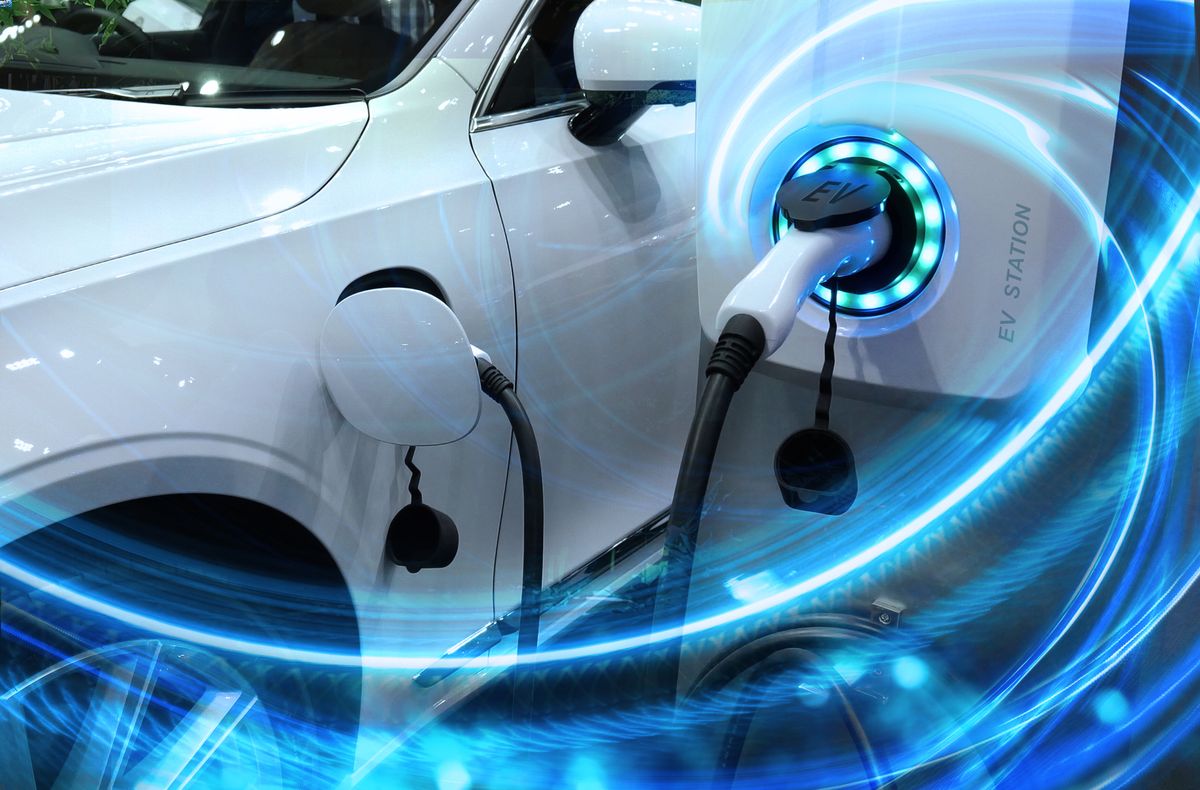In December, Iceland turns into a magical winter wonderland that will make Disney movies like Frozen blush! A thick blanket of snow draped over the landscape, waterfalls seemingly frozen in time, glistening glaciers, and ice caves filled with interesting ice formations, you name it, Iceland’s got it. But our winter wonderland comes with some challenges when driving in Iceland in December.
But there’s no need to stress or miss out on the adventure of a lifetime! As locals, we created this guide to provide you with local insights, tips, and advise to ensure that your trip to Iceland in December is memorable for all the right reasons, and you don’t have to white-knuckle your way through your Iceland adventure. So, without further ado, let’s get into what you can expect from the roads here in Iceland in December and how to come prepared.
Is December a Good Time to Drive in Iceland?
Whether December will be a good time for you to drive around in Iceland will depend on a number of factors. The most important things to consider are:
- Are you used to driving in snow and ice? If not, you may struggle (even if it’s more with your nerves than anything else).
- Is the whole point of you driving in Iceland in December to road trip around the island? Then you’ll need to ask yourself what you envisioned that road trip to be. If your dream road trip includes exploring the Highlands and the Westfjords, you’ll need to postpone your trip to the summertime, since the F-roads are only open during the summer months, and the rest of the roads, especially those in the north, are vulnerable to sudden road closures due to the weather.

- Except for the places you want to explore here on the island, are there specific things you’d like to see and do in Iceland? For example, if you’ve always wanted to experience a Midnight Sun, winter is not the right time for you to visit the island. Or perhaps you’re trying to catch a glimpse of the Iceland Puffins? Then you’re a few months off.
- If you’re someone who wants to drive long distances every day and have an absolute jam-packed trip itinerary (especially when it comes to outdoor activities), then visiting Iceland in December is also probably not the right time to visit since you’ll only have 4 hours of daylight a day to work with, and weather conditions are definitely not conducive to outdoor adventures (unless it’s of the ice variety, of course).
So, When Is It a Good Idea to Go Driving in Iceland?
Seems like there are many reasons why one should avoid driving around in Iceland in December, but then you haven’t explored all the reasons why December makes for the perfect trip yet! Check these out:
- The colder conditions make for picture-perfect winter scenes you’d only expect from postcards and Christmas Hallmark movies, so it should come as no surprise that December is a favorite among amateur and pro photographers alike.
- The colder conditions and fewer daylight hours make for the perfect conditions to spot our famous Northern Lights! There’s nothing like sitting in a hot spring somewhere while watching these bright neon lights dancing across the sky.

- Kayaking and canoeing may be out when visiting Iceland in December, but there are still plenty of other exciting outdoor adventures you can look forward to (many of which are not available during our warmer months). These include snowboarding, skiing, ice cave exploring, and glacier hiking.
- As long as you don’t visit during the period between the festive season and New Year, you’ll be visiting the island during our so-called off-season, which means that you don’t have to contend with pesky peak season crowds or budget for exorbitant peak season prices.
- Having your own transport and being able to drive yourself around here in Iceland will always be first prize, since this means you’ll be in complete control of your time and trip itinerary.
Weather Conditions and Daylight Hours
If this will be your first time visiting Iceland in December, here’s the lowdown on what you can expect from the weather:
Average Temperatures and Snowfall
As you may already imagine, December definitely puts the ice in Iceland. You can expect temperatures ranging from -2 to 4 degrees Celsius, with our more extreme weather conditions taking center stage. That’s why you can expect special appearances by our legendary winds with speeds of over 35 kilometers an hour, as well as blizzards.
Even when these take a backseat, you can still expect sleet, rain, and snowfall throughout the month (but how else do you want that picture-perfect winter wonderland scene?). Although the amounts may vary between regions and differ between the years, you can generally expect the following averages:
- Snowfall = 17.8 cm (7 inches) in the south and 30 cm (12 inches) in the north.
- Rainfall = 94.9 mm (3.74 inches) in the south and 72.8 mm (2.87 inches) in the north.
As you can see, there is a clear difference between the south and the north here on the island, so you should always be prepared for harsher and colder weather conditions in our northern regions.
Another interesting phenomenon here on the island is that you’ll often have the illusion of the cities and towns being slightly warmer than what’s happening beyond their borders. But this is merely because the buildings create shelter against the harsher (and colder!) weather elements.

Limited Daylight and How it Impacts Planning
December offers visitors the fewest daylight hours, slowly transitioning from just 5 hours of daylight every day to only 4 by the end of the month. These generally tend to occur between 11:00 and 16:00.
As you already know, the fewer daylight hours are also what allow for magical experiences such as the Northern Lights, and even though many of the other sights and activities on the island are geared for the darkness, we’d still not recommend you road trip around in our more remote regions or plan jam-packed days since the darkness can slow things down considerably.
Instead, work your itinerary around the 4 hours of daylight and spend the rest of the day exploring our cities and towns, try out our delectable local cuisine, and check out some of our interesting museums.
What Type of Car Should You Rent in December?
This is usually the first question on anyone’s mind who’s planning on driving in Iceland in December. Here are our recommendations and advice:
Why You Need a 4x4 or SUV
Although a 2-wheel drive with the appropriate winter gear and tires is perfectly adequate for driving on our paved, main roads or in our cities and towns, we’d still recommend opting for a 4x4, especially an SUV, if you’re a group of friends or a family traveling together. This is because a 4x4 has higher ground clearance and better grip and is built to take on all sorts of terrain.
So, not only will a 4x4 open the door to more experiences here on the island (you can’t experience things you can’t even get to in the first place, right?), but you’ll also have the peace of mind that you’ve chosen the safest option when it comes to driving in our winter conditions here on the island. Some of the popular 4x4 rentals here in Iceland include the Suzuki Jimny, Toyota Land Cruiser, and Dacia Duster.

December Rental Costs: What to Expect
Planning a December self-drive in Iceland? Your budget will look quite different compared to a summer trip, and here's what you need to know.
Winter vs. Summer Rental Prices
December rental prices are typically 20-30% lower than summer rates. A basic economy car that might cost $35-45 per day in December can jump to $45-60 per day in summer. 4x4 vehicles, which we strongly recommend for winter driving, range from €50-90 per day, compared to €80-120 during peak summer months.
Fuel Costs Hit Harder in Winter
Fuel prices in Iceland are already steep (expect around $1.60-1.80 per liter), but December brings additional challenges. Your fuel consumption will increase significantly due to:
- Constant heating: Keeping the car warm can increase fuel consumption by 15-25%
- Longer engine warm-up times: Cold starts and defrosting eat into your fuel efficiency
- Slower driving speeds: Icy conditions mean more time on the road
Budget for roughly 30-40% more fuel than you would during summer driving.
Essential Add-On Insurance
While we covered insurance basics earlier, December driving makes certain add-ons practically non-negotiable:
- Gravel Protection (GP): essential for winter road debris.
- Sand & Ash Protection (SAAP): protects against volcanic ash and winter sand.
- Platinum Insurance: Reduces your excess to zero.
These add-ons might seem expensive, but one winter storm or encounter with loose gravel can easily cost you $1,500-3,000 without proper coverage.
Bottom Line: While December car rentals cost much less than summer (even half the price!), factor in higher fuel consumption and essential winter insurance. Overall, you'll still save money compared to peak season, but budget carefully for the additional winter-specific.

Road Conditions and Where You Can Drive
If this will be your first time driving in Iceland in December and you’re not sure what to expect from our road conditions, the following will give you a good idea:
Safe Regions for Winter Driving
You will find that most of our paved main roads are well-maintained during the winter months with regular plowing and salting to combat any dangerous snow and ice.
These roads and routes include larger cities and towns like Reykjavik, the Golden Circle route (a short loop road that begins and ends in the capital city), as well as the South Coast Way (a route that’s essentially the southern part of the Ring Road that runs along the coastline). Most of the Ring Road should also be perfectly safe to drive, although you may begin to run into problems the further north you go.
Roads to Avoid in December
For obvious reasons, driving the F-roads in Iceland is out of the question. We reiterate this since some people still try their luck (and get stuck!), while others accidentally end up on these roads due to a lack of signage in these remote regions (and get stuck!). So, please ensure that you do proper research and planning, and you know exactly which are the no-go roads on your map.
Other roads that may still be open but can also be extremely tricky to navigate are narrow roads along our mountains, volcanoes, or hills, as well as gravel roads. Here, you will need to assess the conditions and monitor the official statuses of these roads before taking them on. As we already mentioned, roads in our northern regions can also be heavily impacted by the weather, leading to sudden road closures.

How to Check Road and Weather Conditions
We mention the need for keeping a close eye on the weather and road conditions a lot, but how exactly does one do that? Well, the following sites and apps will play an important role:
Essential Tips for Driving in Iceland in December
The following tips and advice will prove to be invaluable if this is your first time driving in Iceland in December:
Speed, Distance, and Emergency Prep
- Remember that in our winter conditions, slow and steady wins the race. So, drive at a slower pace, avoid sudden acceleration, sudden turns, or abrupt braking. This will help prevent any potential skidding or sliding.
- Ensure that you always keep an extra distance from the cars ahead of you. Remember, the icy road conditions can make braking distances ten times longer than usual!
- Always ensure that you have at least half a tank full of gas, and if you’re heading out to any of our more remote areas, please fill up before heading out.
- Pack a first-aid kit if your rental agent does not provide one. You’ll be surprised at how valuable it can be, from treating simple cuts to making a difference during those first life-saving moments of a serious injury.
- Ensure you always have a few rations of extra snacks (like dried fruit and energy bars) as well as water with you before heading out on the road, especially to those remote areas.
- Please ensure that you’ve saved all important numbers on your phone, such as the rental agent, insurance company, and our national emergency number, 112.

What to Do If You Encounter a Storm
You can come as prepared as possible and regularly check in on the weather forecast, but you can still get caught in a storm. If that should ever happen, remain calm and do the following:
- Pull over somewhere safe.
- Do not get out of the car to assess the situation or to find help. Please stay in your vehicle – it will be where people look first and will act as shelter.
- Wait for conditions to improve before heading back out on the road again (albeit carefully).
- If the storm isn’t letting up or the road conditions have turned so bad that it won’t be possible for you to drive further, then call your rental agent as well as the national emergency number.
Insurance: What Coverage You Really Need
While your rental car will come with the standard insurance policies that are mandatory here in Iceland (Collision Damage Waiver and Third Party Liability), there are a few add-ons you may want to consider when driving in Iceland in December.
This includes Sand and Ash Insurance (especially when driving along the coast, where the wind will practically be sandblasting that vehicle), Gravel Protection (if you’ll be taking any “roads less traveled”), Tire Protection, as well as Windshield Protection. However, if you’re not sure of exactly what add-ons you may need for your specific trip itinerary, please chat with your rental agent.

Suggested Winter Road Trip Routes
Below are a few ideas you can incorporate into your trip itinerary:
5-Day South Coast Itinerary
Day 1: Arrival at Keflavik Airport and travel to the capital city of Reykjavik. Spend the day exploring its landmarks and sites.
Day 2: Road trip the Golden Circle route, which includes highlights such as Thingvellir National Park, Gullfoss Waterfall, and Geysir Geothermal Area.
Day 3: Time to begin your journey down the south coast, with day 3 including stops at Seljalandsfoss Waterfall and Skogafoss Waterfall.
Day 4: Today, you’ll continue your journey down the south coast with visits to Jökulsarlon Glacier Lagoon and the nearby ice caves.
Day 5: Time to head back to Reykjavik! But make a few final interesting stops along the way, such as at Fjadrargljufur Canyon.
The Golden Circle
If your time is limited on the island, just doing the Golden Circle route is a good option. This 300-kilometer loop road can actually be driven in a day if push really comes to shove. However, we do recommend trying to go at a more relaxed pace (2 to 3 days).

A Short Northern Lights Excursion
If you’re looking for just short outings to explore the Northern Lights from the capital city of Reykjavik, we can recommend taking short drives out into the Reykjanes Peninsula or even Thingvellir National Park, where there is little light pollution, and you can park overnight at one of the campsites.
What to Pack for a December Driving Trip
Here are some of the essentials you’ll need for your December drive in Iceland:
- Thermal underwear and leggings.
- Waterproof clothing and gear, including a raincoat.
- Waterproof hiking boots.
- Warm woolen hat (a beanie works great), gloves, and socks.
- Sunglasses and sunscreen (glare from ice and snow will have you permanently squinting, and it can give you a nasty sunburn even during the coldest month of the year).
- Headlamp (so you can keep your hands free).
- Ice scraper (if your rental agent doesn’t provide one).
- Essential electronic devices along with their chargers, cables, car chargers, and power banks.

FAQs About Driving in Iceland in December
Below are the answers to some of our most frequently asked questions about driving in Iceland in December:
Is It Safe to Drive in Iceland in December?
It is perfectly safe to drive in Iceland in December as long as you drive the right vehicle, keep a close eye on the weather forecast and road conditions, and listen to our local insights.
Are the F-roads Open in December?
No, the F-roads are not open in December. They would’ve already begun to close from mid-September and will only start to reopen by late May.
Can I Drive a Compact Car Instead of a 4x4?
That all depends on what you plan on doing and where you want to drive. For example, a 2-wheel drive with all the necessary winter gear is more than sufficient for driving inside our cities and towns and on paved, well-maintained roads. But the moment you move to our unpaved roads and our more remote areas, there’s no way you can travel without a 4x4.
Final Thoughts and Booking Tips
From our guide, you can clearly see that while it may initially seem scary to take on our frozen landscape, the right vehicle, along with a few local tips and advice, can pave the way for an unforgettable Iceland adventure.
While December is considered the “off” season here in Iceland, we do recommend that you book your rental car in Iceland, accommodation, tours, etc., well ahead of time if you’re planning on visiting during our festive season. As you can imagine, in a winter wonderland such as ours with the Northern Lights dancing across the sky, many flock to the island for the experience.
So, what are you waiting for? Book your flight, pick up your rental, and explore Iceland on your own terms (with the help of a few cups of hot chocolate along the way).


 By
By


